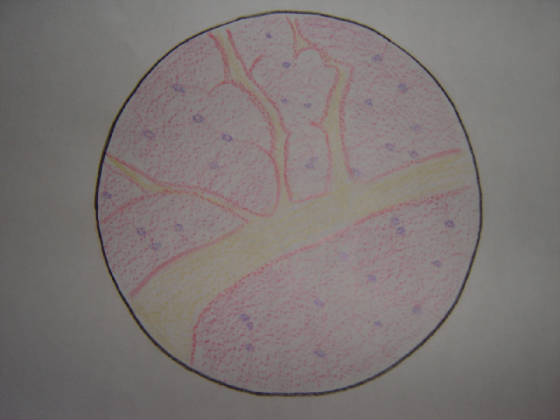|
The pancreas is located in the abdomen, posterior to the stomach in humans. It is a small, elongated
organ which is part of the both the exocrine and endocrine system. It is covered in a tissue that divides it into lobules,
of which the bulk is pancreatic exocrine cells. These cells are filled with particle which secrete digestive enzymes, primarily
trypsin, chymotrypsin, pancreatic lipase and amylase, which are secreted into clusters of ducts called acini. Pancreatic secretions
contain bicarbonate ions which function to maintain the pH balance of the duodenum by neutralizing the acidic chyme which
is drained from the stomach. This is accomplished when the pancreatic secretions collect in ducts that drain into the duodenum.
Because the pancreas releases digestive enzymes it is the main source for digesting proteins and lipids. In addition, the
pancreas functions within the endocrine system, producing several significant hormones. Throughout the exocrine tissue of
the pancreas are located clusters of cells known as the Islets of Langerhans. These are the endocrine cells of the pancreas,
containing three different types of cells. Firstly, alpha cells, which produce glucagons; secondly beta cells, which produce
insulin; and lastly delta cells, which produce somatostatin. These three hormones help regulate blood sugar level within the
body.
|






